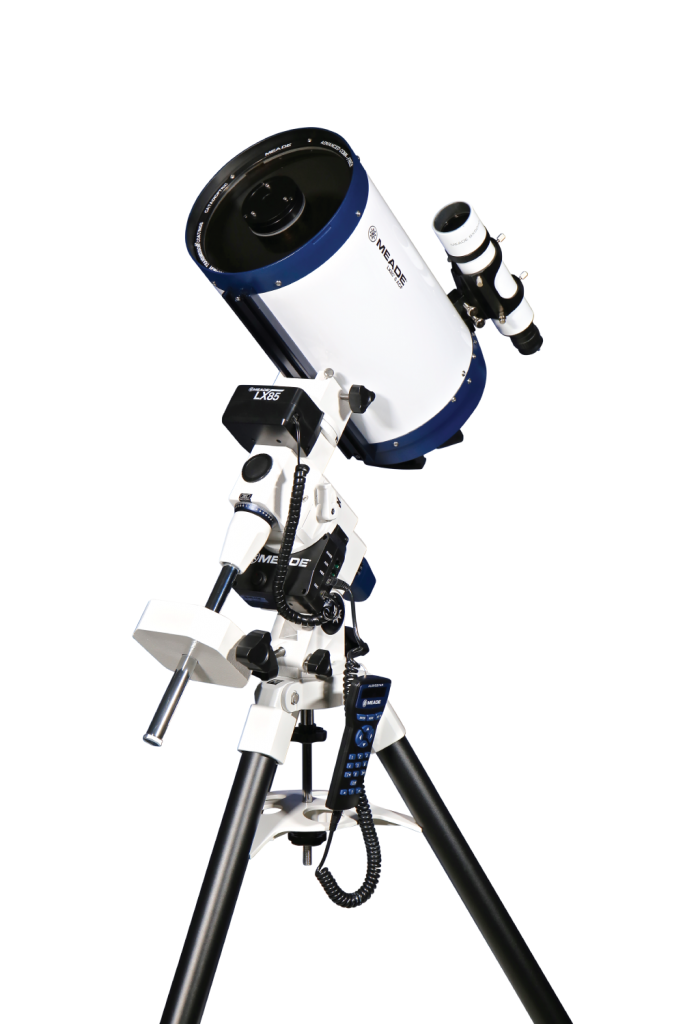JUNE 2022
8 inch Aperture Telescopes part 2 – Schmidt-Cassegrains
An article in the author’s Astronomy Digest https://www.ianmorison.com
In 1930 an Estonian optician, Bernhard Schmidt, invented acamera – called a Schmidt Camera – that was able to take wide field images ofthe sky. The primary mirror wasspherical and Schmidt realized that he could eliminate the spherical aberrationby using a thin, very weakly curved aspheric lens (called a ‘Schmidt correctorplate’) at the front of the camera. Thisaspheric lens has a complex curve that cancels out the mirror’s sphericalaberration and also corrects for ‘coma’ at the edges of the field of view. He employed a very clever method to make the correctorplate; which involved carefully warping a parallel glass plate under a partialvacuum into a slight sagging curve and then polishing the upper face flat. After release of the vacuum, the lens springsback into the desired shape needed for the camera. Both the spherical mirror and appropriatecorrector plate are thus easy to make so making Schmidt-Cassegrains affordable.
In 1970 Tom Johnson, who had founded ‘Celestron Pacific’, introduceda ‘C8’ 8 inch diameter, 2,032 mm focal length, f/10 telescope, the first of a newline of Schmidt-Cassegrains that could be built at low cost. These immediately became very popular and withvery minor changes until the Edge HD series, all standard Celestron 8 inch telescopesmade since then have been much the same.
Meade, founded by John Diebel in 1972, began to make Schmidt-Cassegrainsas a competitor to Celestron in 1980. Their telescopes have also proved very popular. The company is now owned by the USA company,Orion Optics and Binoculars.
These Schmidt-Cassegrains are, perhaps, the most popular of all 8 inch telescopes – and with good reason as they can be used both visually or for imaging with a very wide range of celestial objects. As in the Schmidt Camera, they use a spherical primary mirror whose aberrations are corrected with a corrector plate at the front of the telescope tube. This, neatly, also supports the secondary mirror so there are no diffraction spikes. Those made by both Meade and Celestron have a focal ratio of f/10 giving a focal length of 2,032 mm but can be used with a x0.63 focal reducer to give a wider field of view and shorter exposures when imaging.
Schmidt-Cassegraindesign features
As bought, the focusing of a Schmidt-Cassegrain is carried out by slight movement of the primary mirror within the telescope tube. As the single speed focuser – which is a little coarse – is to one side of the mirror, focussing can cause what is called ‘image shift’; the image moves a little in the field of view as the telescope is focussed. This is a particular problem when imaging planets when a very small image sensor is used for ‘lucky imaging’ to remove the effects of atmospheric turbulence. The focusing can be improved in two ways. The single speed focuser can be replaced by a dual speed version making achieving fine focus easier. Particularly useful for planetary imaging, the adding an external focuser at the rear of the tube assembly will remove the problems of image shift. The German company, Teleskop Service, sell either Crayford or (better, but considerably more expensive) Rack and Pinion focusers for this use. A second possible result of the focussing method in the original telescopes is that when, for example, a meridian flip is made by an equatorial telescope mount or one does a large slew across the sky the mirror can move slightly in what is called ‘mirror flop’ – so slightly changing the field of view.
One effect of the corrector plate is to increase the effective width of the incoming light cone. If the primary mirror is the same size as the corrector plate not all the available light will be focused. Meade make their primary mirrors larger than the nominal size (for example – 8.25 inches diameter rather that 8 inches) to capture all the light entering the telescope.
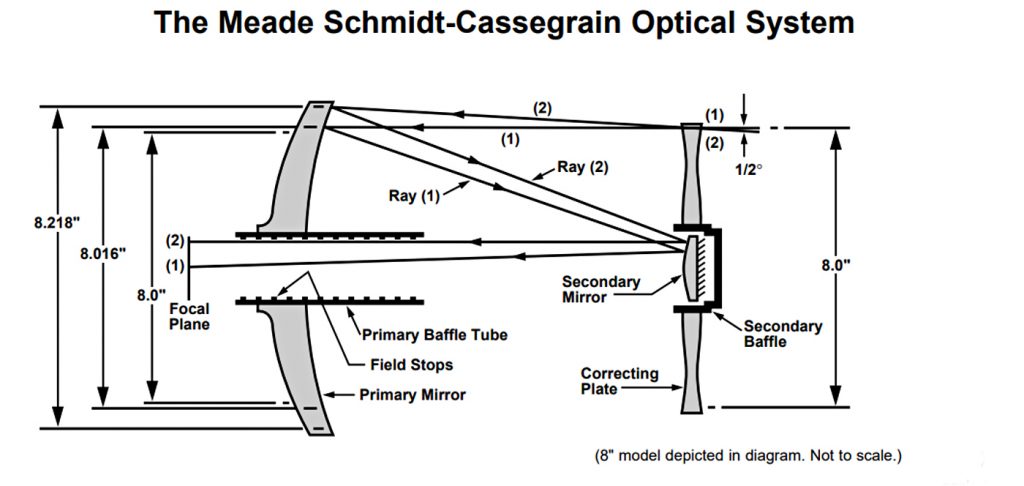
The secondary mirrors have a 34% obstruction which some saywill affect planetary observing and imaging. This is not really a problem as attested by the fact that the world’stop planetary imagers use Schmidt-Cassegarins. The Jovian image below was taken by the author with a 9.25 inchCelestron. [In the UK, the atmospheretends to limit the resolution, so this image is no match for those made using14 inch telescopes from locations, such as Barbados, where the ‘seeing’ is exceptionalbut it is representative of what can be easily achieved with a smallertelescope here.]
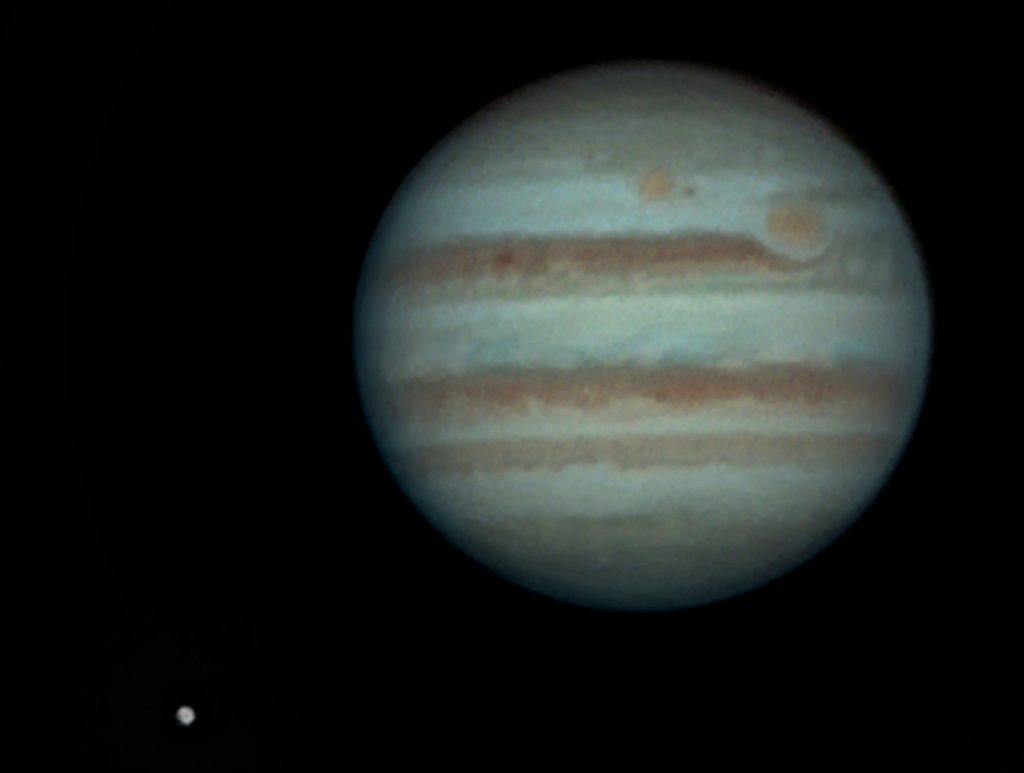
The corrector plate is prone to dewing up so dew shields and dew heaters are often required. With a closed tube, cooling times are longerthan for open tube telescopes. (A fansystem such as the ‘Asterion Cooler Cat’ can be bought from First Light Opticsfor £109 to pass filtered air through the eyepiece holder into theinterior to reduce the cooling time.)
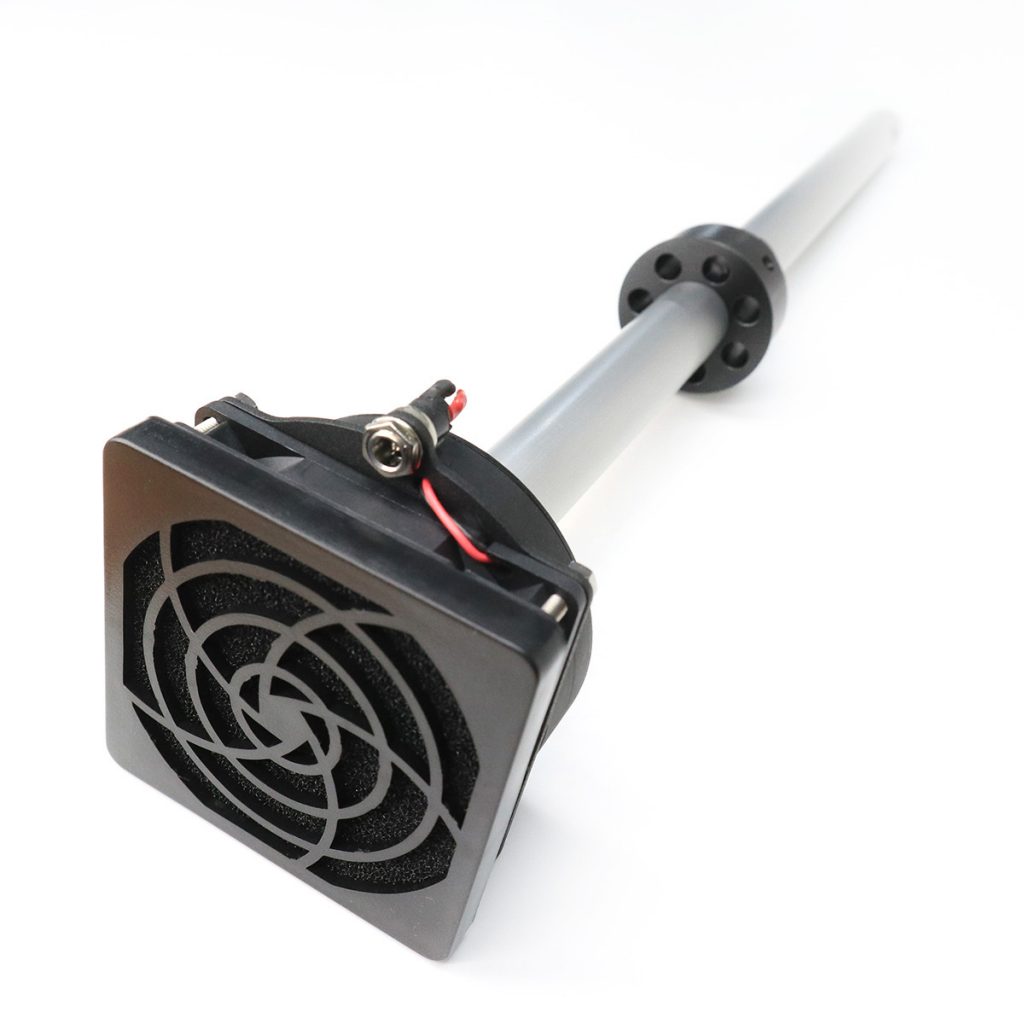
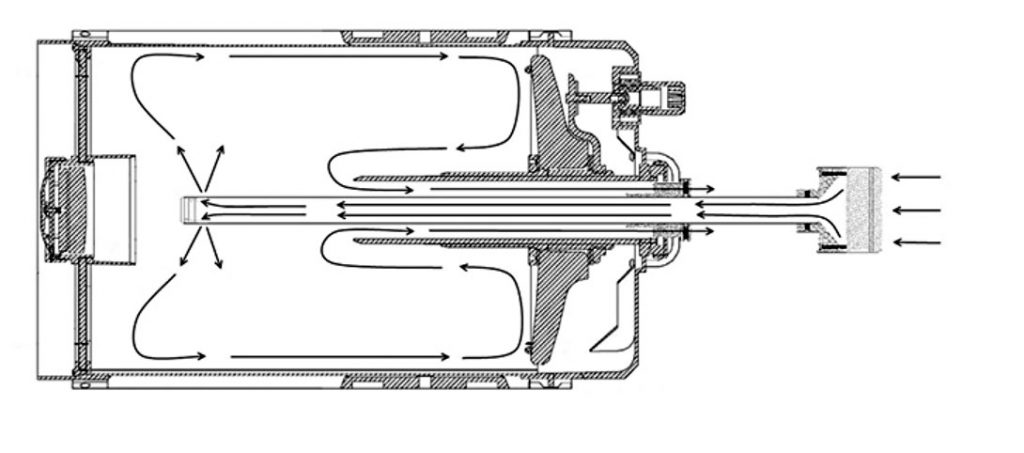
When viewing with a very wide field eyepiece or imaging with a large camera sensor, some coma will be visible towards the edge of the field using the original Celestron and Meade designs.
Advanced versions
Both Meade and Celestron haveproduced new versions of their Schimdt-Cassegrains to remove coma and give alarger flat field. The Meade telescopesare called ‘Advanced Coma Free’ and use a hyperbolic secondary mirror and newcorrector plate design and are the only versions now manufactured. To achieve the same objective, Celestron EdgeHD versions employ a dual element lens mounted in the primary baffle tube.
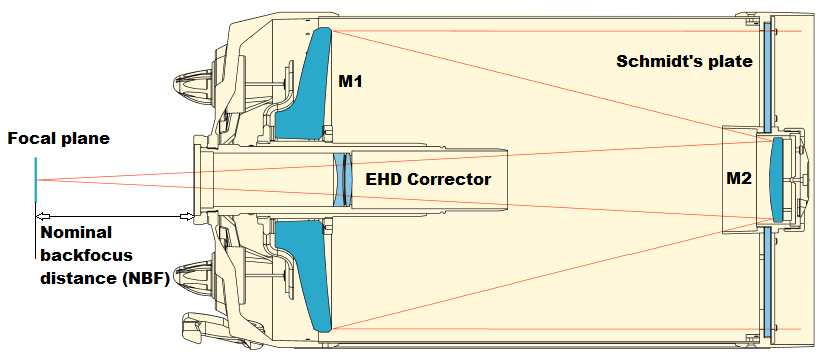
Once focussed, the positionof the Celestron and Meade primary mirrors can be locked to eliminate mirrorflop, very useful if astroimaging is to be a common use of the telescope.
Celestron Telescopes
Celestron Schimdt-Cassegrains can be bought as just atube assembly or with a wide variety of both Alt/Az or equatorial mounts suchin the Celestron Nexstar 8 SE Telescope using a single arm computerised Alt/Azmount for around £1,300.
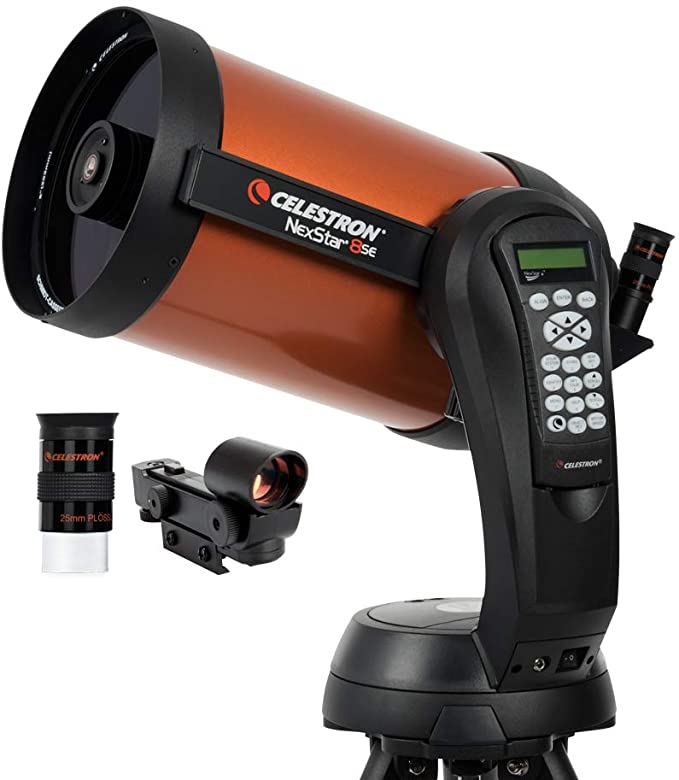
The new NexStar Evolution 8mount, costing ~£1,800, enables one to cоntrоl the tеlеѕсоре wіrеlеѕѕlу frоm anіОЅ оr Аndrоіd ѕmаrtрhоnе оr tаblеt. TheAlt/Az mount includes a rесhаrgеаblе lіthіum-іоn bаttеrу wіth еnоugh роwеr fоr10 hоurѕ оf соntіnuоuѕ оbѕеrvіng.
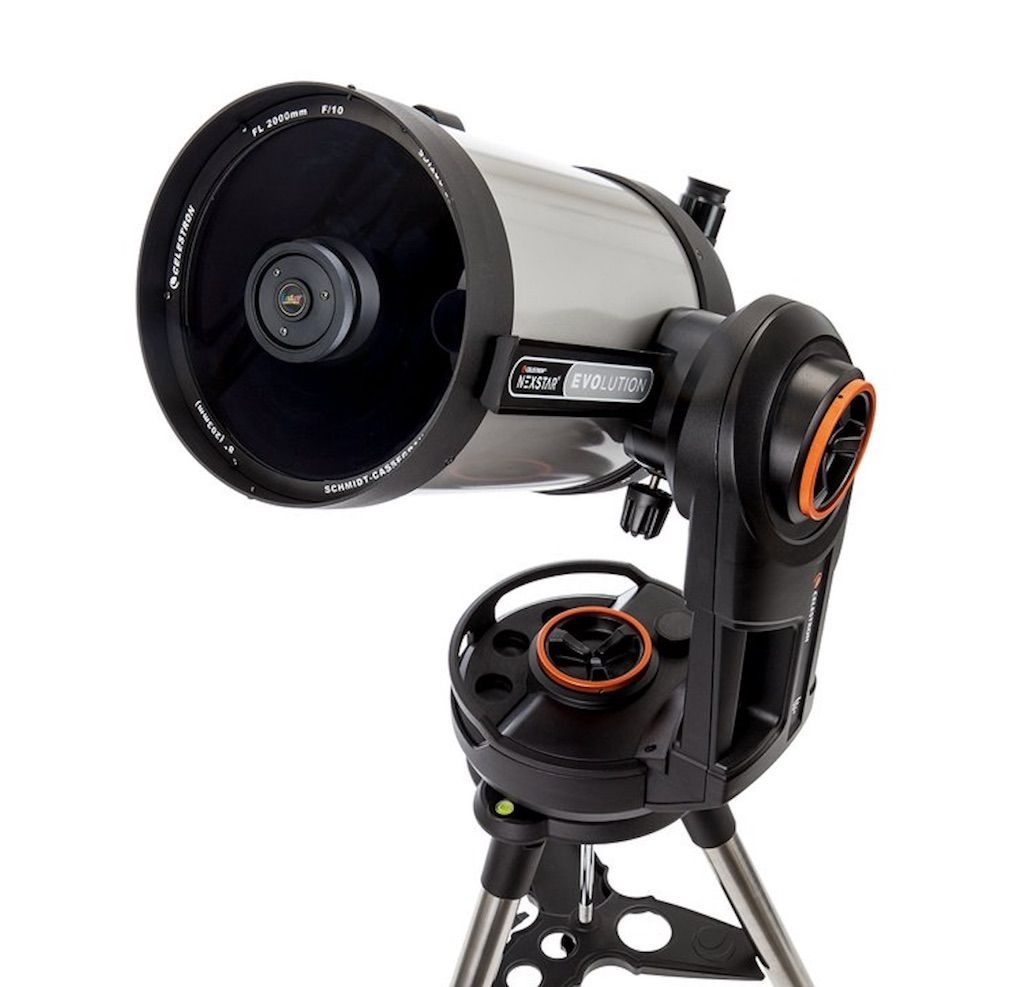
An equatorial wedge can be acquired for astrophotography use as, then, ‘frame rotation’ is not a problem.
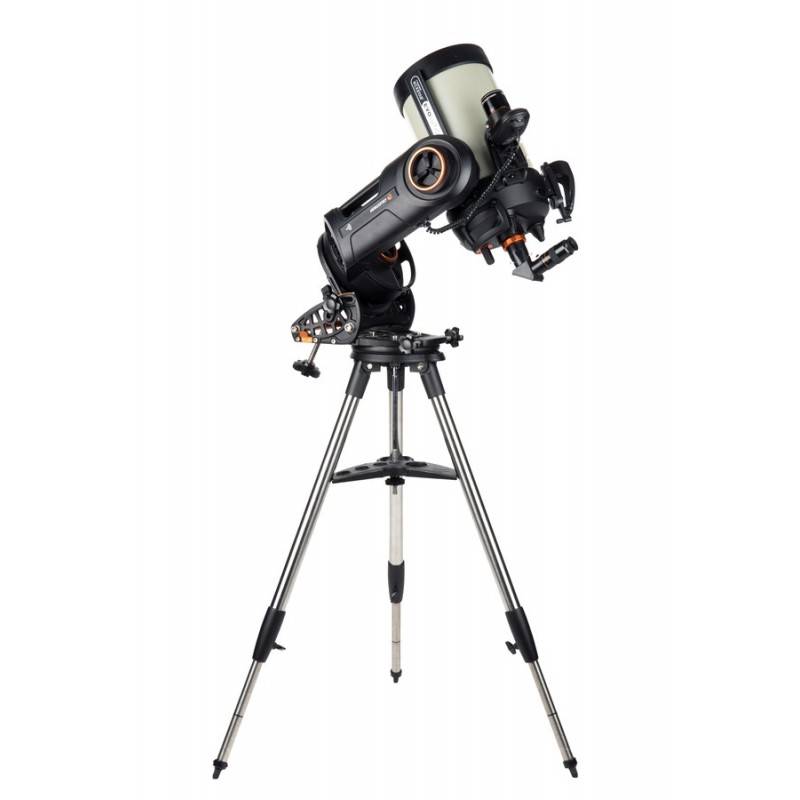
The telescope can also bebought with a computerised equatorial mount for around £2,300. The Edge HD version costs £1,900 for the tubeassembly and can be bought mounted on an equatorial mount for ~£2,500.
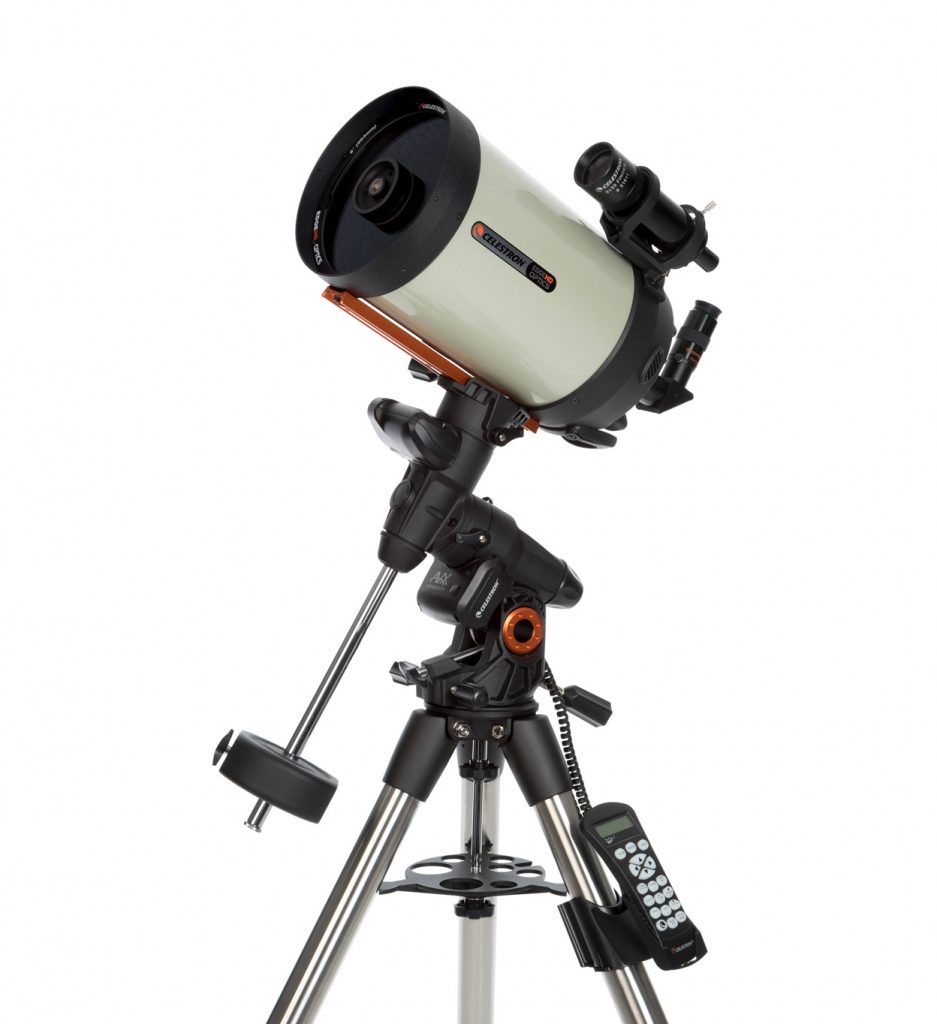
An interesting feature of thelatest Celestron versions is that the secondary mirror can be replaced by aStarizona Hyperstar optical system to allow a camera to be placed in front ofthe corrector plate providing a focal ratio of f/1.9 allowing very fast widefield imaging with maximum field of view of ~4 degrees.
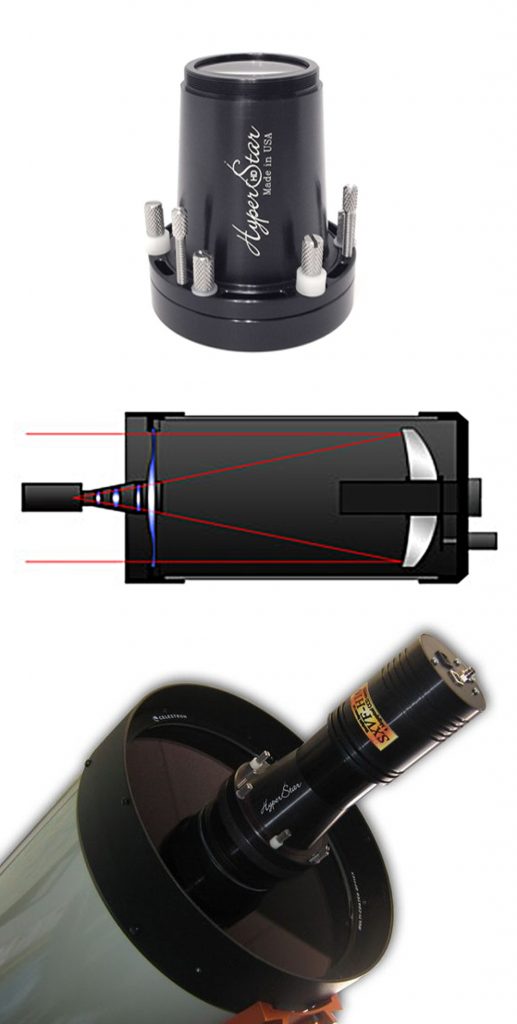
Meade Telescopes
At the present time in the UK, Meade telescopes are only available new from Meade UK (https://www.meadeuk.com/) and only the new ACF versions are available. At the time of writing, their 8 inch ACF Optical Tube Assembly can be bought for £1,127 (nominally £1,499) but, due to electronic components being in very short supply, no mounts are currently available in the UK. It is hoped that this will be rectified soon.
There will then be three OTA/mount combinations available. Their latest is a single arm alt/az mount, the LX65-8acf , which will cost around £1,500.
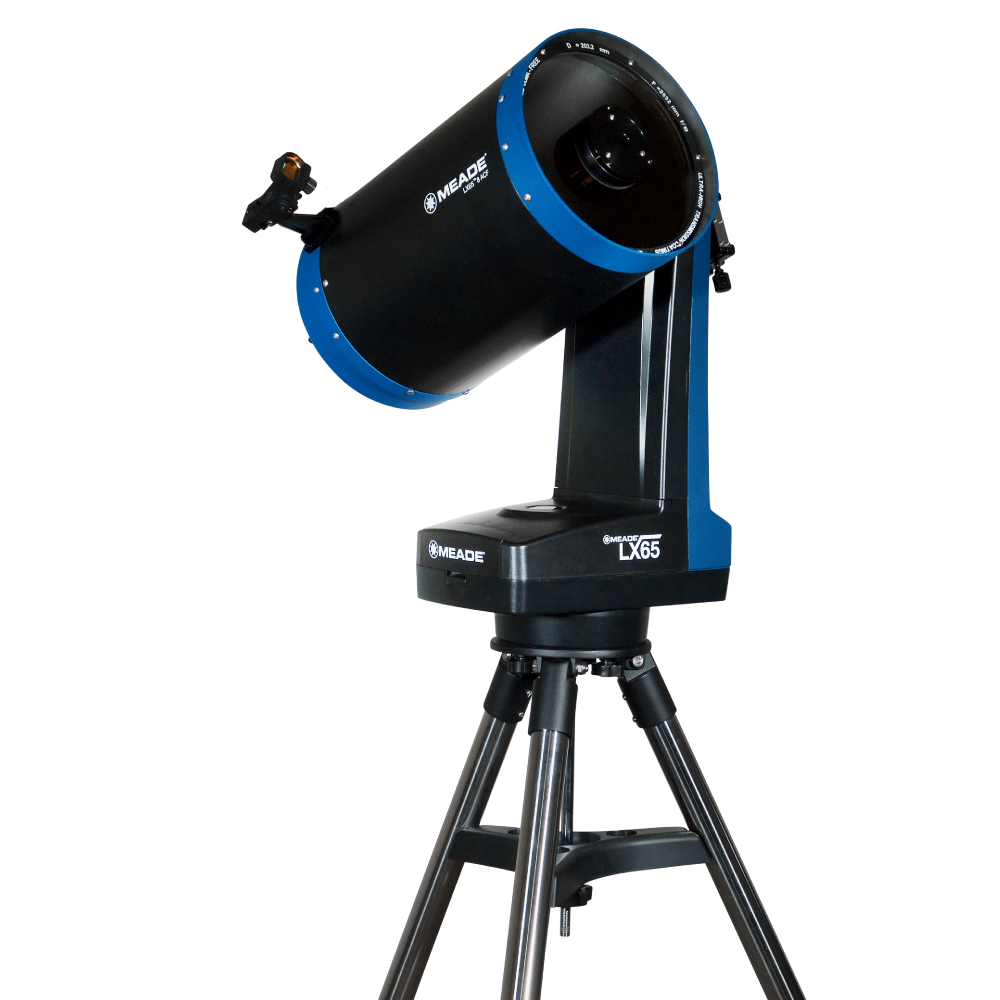
The second is the ‘classic’LX200-8acf fork mount, at around £4,500 with tripod, which has been themainstay of Meade Telescope mounts for many years. For around £270 an ‘equatorial wedge’ can be bought to make the mount better suitedto astrophotography.
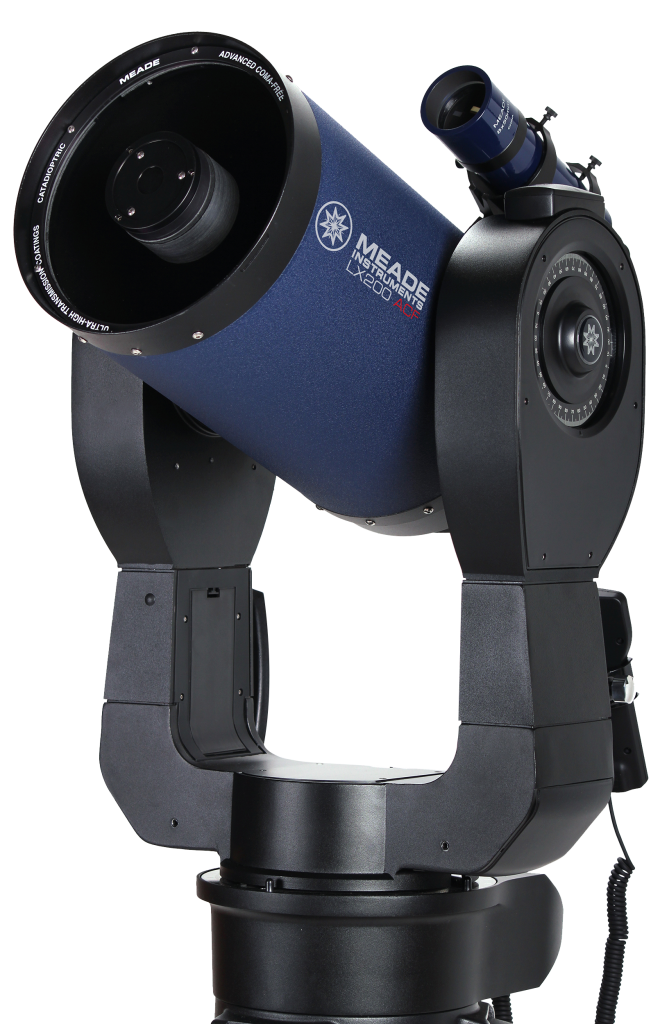
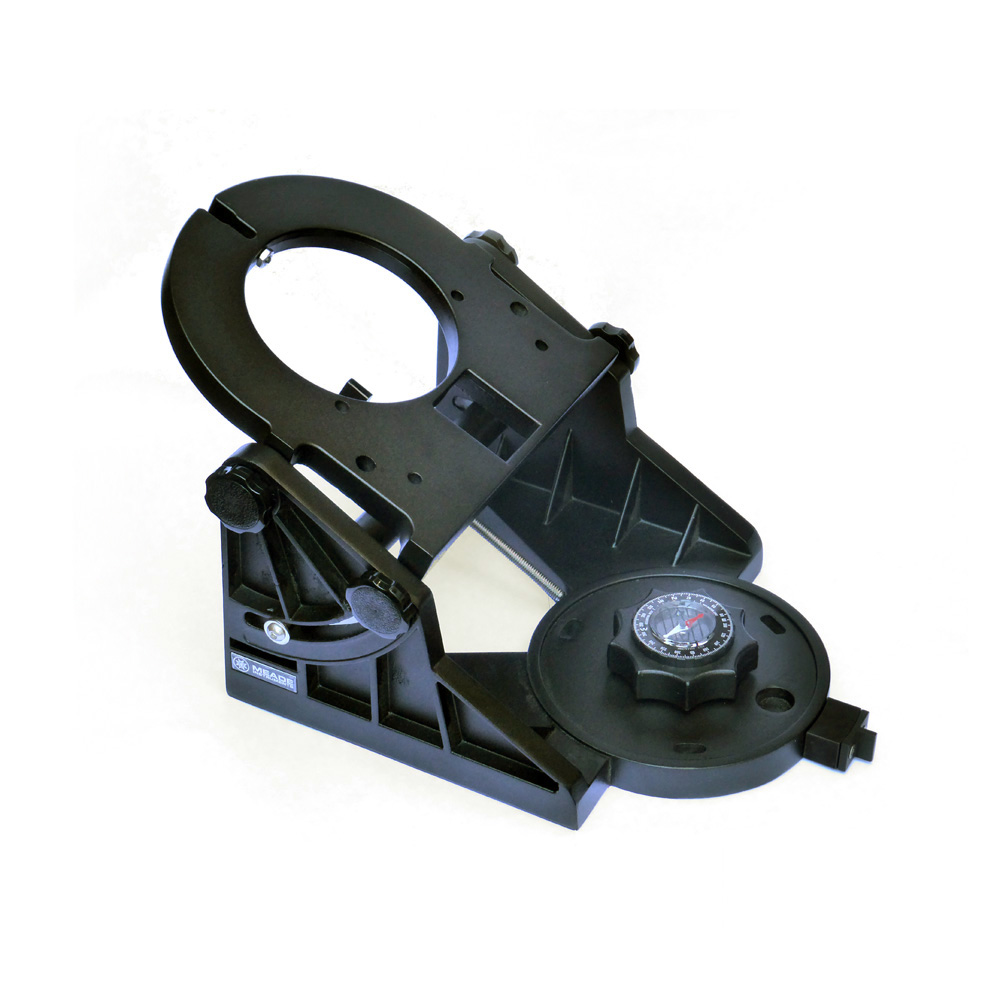
The third is the LX85-8acf computerised equatorial mount which will cost around £2,000.
